Healthy hair after 50 isn’t about following outdated rules. It’s about embracing what works for you.
When I turned 50, my stylist suggested I go au naturel. For years, we’d been mimicking my natural color with highlights and lowlights, but one day she said, “Why not let your true shade shine?” So I did, and I’ve never looked back.
It was freeing at the time, but this was way back in 2008, and not many women were letting their grays show. The cultural conversation was very different. Gray hair was still whispered about as “letting yourself go,” and women my age were expected to cover it up.

San Francisco 2015. One of my favorite haircuts.
Let me just say, there were LOTS of opinions about my hair color. Especially when I started blogging, some readers thought it was chic and sophisticated, while others thought it was a mistake. I got every comment under the sun — from “your hair looks so fresh and modern” to “you’d look younger if you colored it.” But here’s the truth: I wasn’t chasing “younger.” I was chasing me.
Fast forward to 2025, and the conversation has changed. Going gray is no longer seen as a sign of giving up. It’s chic, it’s powerful, and it’s a choice. Celebrities, CEOs, and women on Instagram are all embracing their silver strands. Gray hair is no longer something to hide; it is something to celebrate. And I love knowing that when a woman asks me, “What color do you use?” I can smile and say, “This is 100 percent natural.” Sometimes people even insist I have changed it, but usually that is just the lighting playing tricks.
And as for haircuts? I’ve had a pixie since I was seventeen. For whatever reason, I chopped it all off in high school and never went back. My dad used to tease me, saying I was ‘Joan of Arc’, so no, I didn’t cut my hair short because I hit a certain age. That old rule that says women must chop their hair after 50? Not a chance. If you love long hair, keep it. If you are happiest with a bob, a pixie, or anything in between, that is fabulous too. Your hair should reflect what makes you feel like yourself, not what a calendar dictates.
Prom 1976 with my Dad.
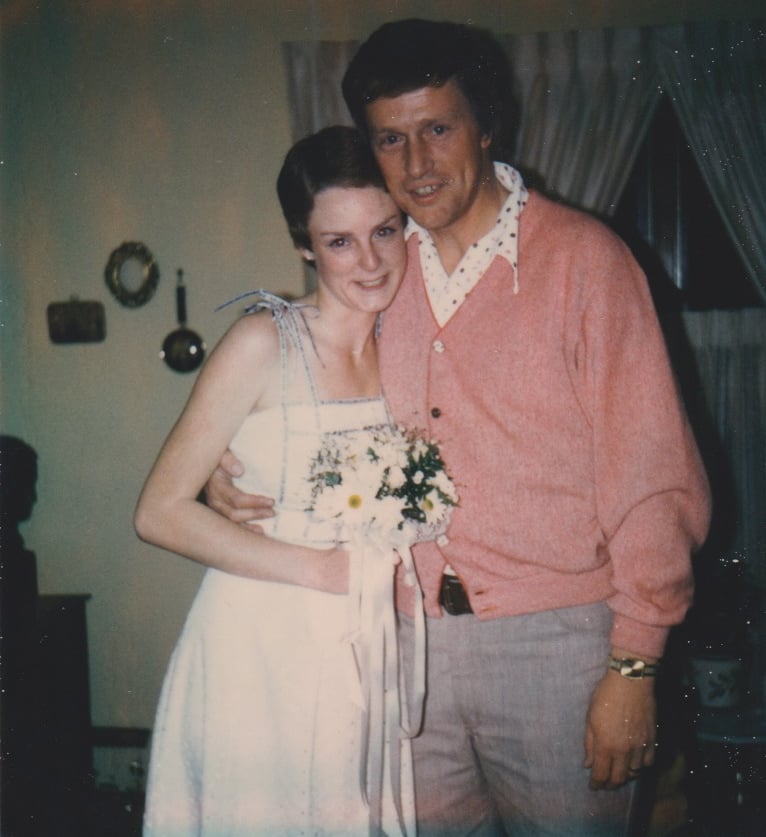
What Happens to Your Hair After 50?
Midlife hair is not the same as hair in your twenties, and that is okay. But it helps to know why things are changing.
- Hormonal shifts: Lower estrogen and progesterone mean thinner, slower-growing hair. Testosterone becomes more dominant, which can cause shedding at the crown.
- Reduced oil production: Hair feels drier and loses its natural shine.
- Texture transformations: Straight hair may become wavy, curls may loosen, and gray strands often feel coarser.
- Scalp health: Circulation slows, and product buildup can block follicles if we are not careful.
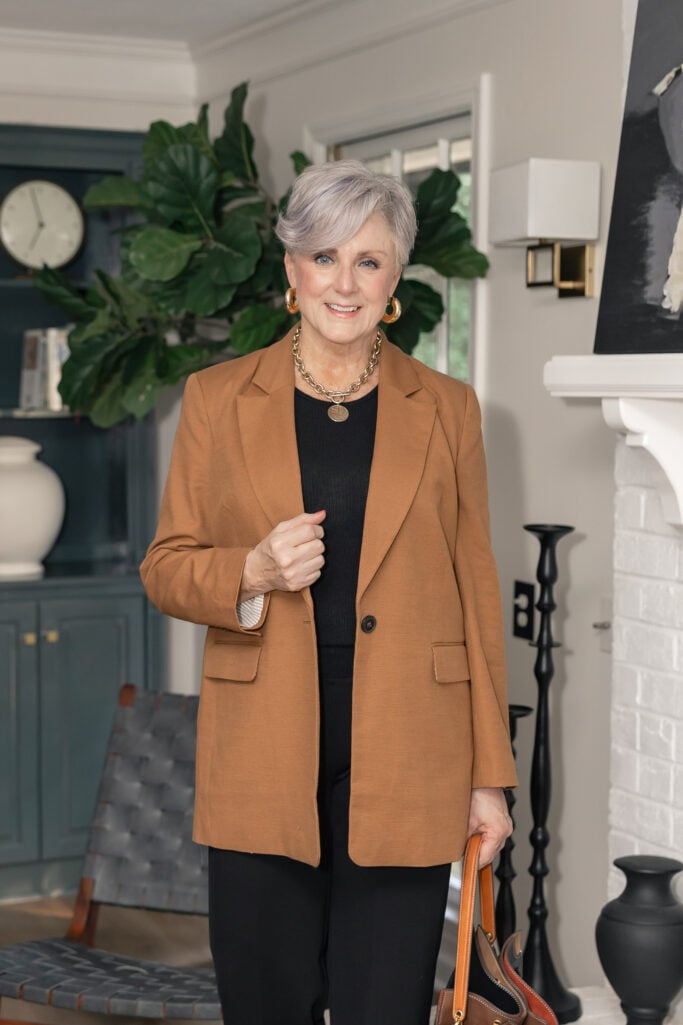
How Can You Keep Hair Healthy and Shiny After Menopause?
Healthy hair after 50 and after menopause starts with what you put inside your body.
- Supplements: Nutrafol has conducted clinical studies demonstrating reduced shedding and improved hair thickness after consistent use. Nutrafol has a physician-formulated Hair Growth Neutraceutical, and they also created Balance Hair Growth, specifically designed for women over 50. Additionally, you can save $50 off your first order of Nutrafol. I’ve been a big fan of this brand since I partnered with them on YouTube years ago. I also learned a great deal about hair and hair loss from their consultants. I’m also a big believer in collagen for promoting healthy hair and nails. One of my favorites is Vital Proteins Collagen Peptides Powder Advanced with Hyaluronic Acid & Vitamin C. Yep, that’s a mouthful.
- Real food: Protein, healthy fats, iron, and vitamins D and B are essential. I take a 4:1 supplement Calcium + D3 + K2 + B12.
- Stress and sleep: Stress can literally push follicles into resting mode. Exercise, meditation, or even a daily walk with the dog helps.
And it’s not just midlife women who struggle. My daughter-in-law is experiencing postpartum shedding after giving birth to baby June. Postpartum hair loss is normal, but that doesn’t make it any easier when you are watching your hair fall out in clumps. I sent her Nutrafol Postpartum to help her through this season.
Sometimes my hair looks lighter. But it’s all in the lighting.
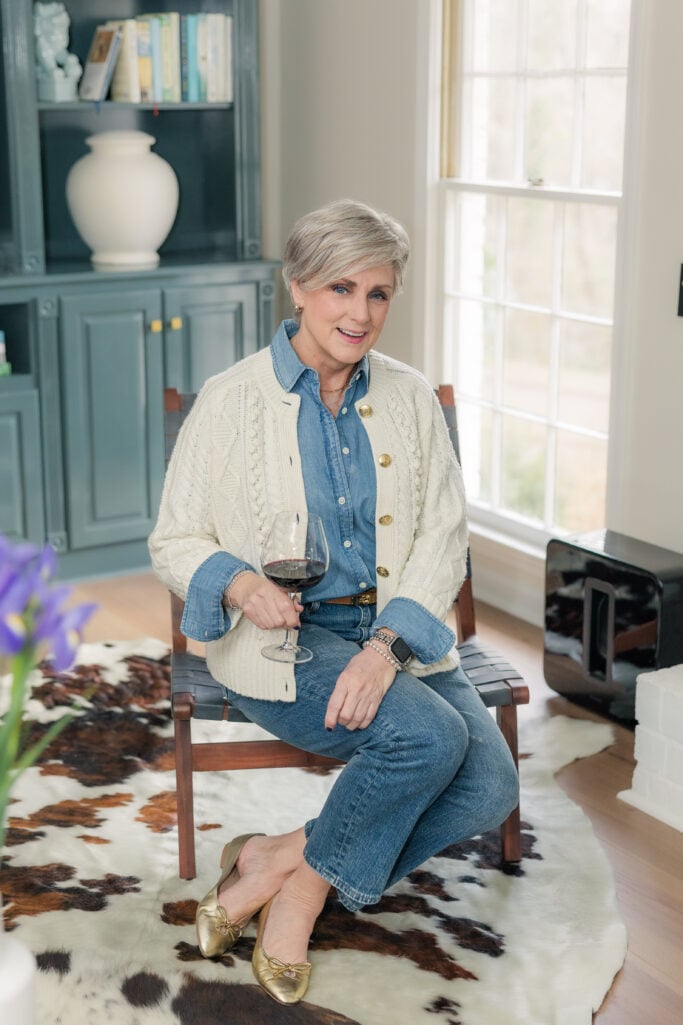
My Weekly Hair Care Routine for Women Over 50
People often ask me what I actually use on my own hair, so here’s the real routine that keeps my silver pixie healthy, shiny, and styled without fuss.
Purple Shampoo and Conditioner (1–2 times a week)
Gray hair can get brassy, so I reach for Hair Biology Silver Shampoo & Conditioner. I use it once or twice a week. Any more than that and your hair can start looking violet.
Sulfate-Free Shampoo and Conditioner (on the other days)
The rest of the week, I keep it gentle with this sulfate-free shampoo and this conditioner. It cleans without stripping, which is key for aging hair.
Weekly Hair Mask
Once a week, I treat my hair to this deep conditioning mask. It keeps my pixie soft and shiny instead of wiry or dry.
Pre-Blow Dry Serum
Before I blow-dry, I smooth in a few drops of argan oil taming serum. It tames frizz and adds heat protection.
Hairspray with Shine
For hold without stiffness, I finish with Moroccan Oil Luminous Hairspray. It adds shine and keeps my style polished.
Dry Shampoo for Volume
On days I skip a wash, I reach for R+Co Dry Shampoo. It gives my hair volume and freshness without buildup.
Style Tip: Healthy hair after 50 is about consistency, not complication. This routine takes me less than 15 minutes, and because I stick to it, my hair looks better now than it did in my forties.
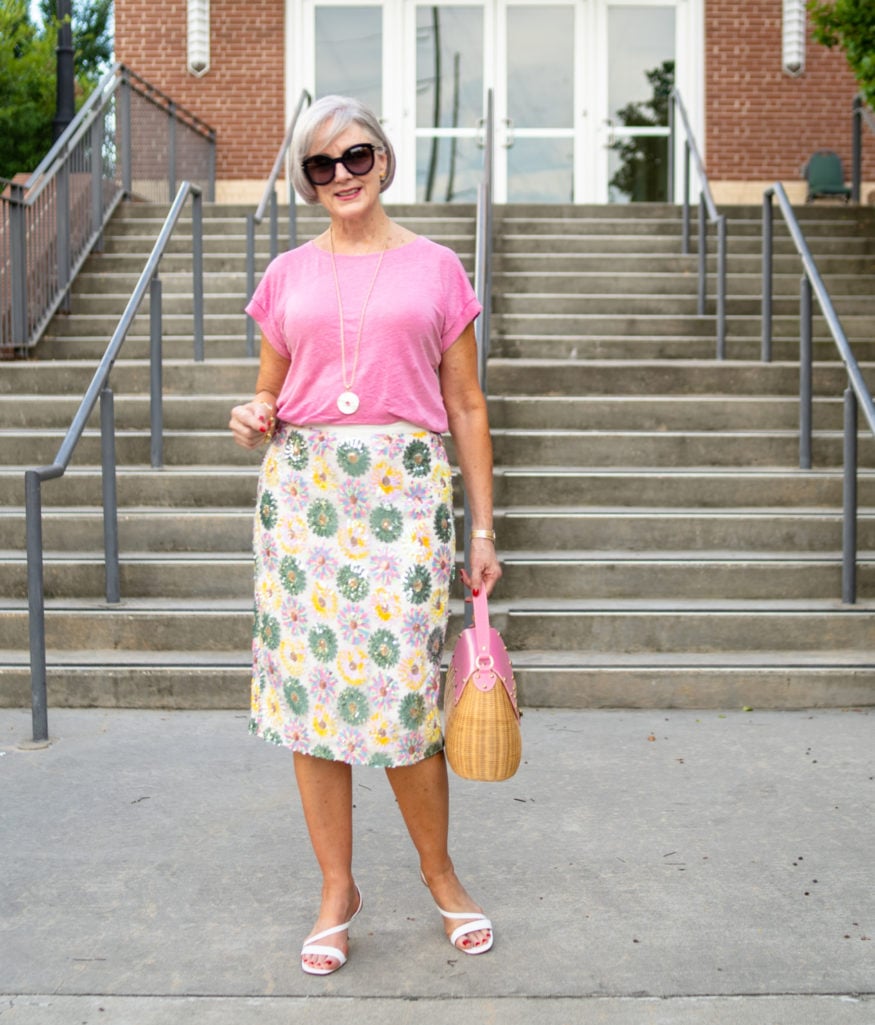
COVID and longer hair.
What Is the Best Shampoo for Gray Hair?
I recommend Hair Biology Silver Shampoo & Conditioner. It brightens gray, silver, or white strands and prevents dullness. Just do not use it daily or you risk a lilac tint. Pair it with a gentle sulfate-free shampoo on non-purple days.
The style right after the salons opened in 2020, and I nixed the bob.
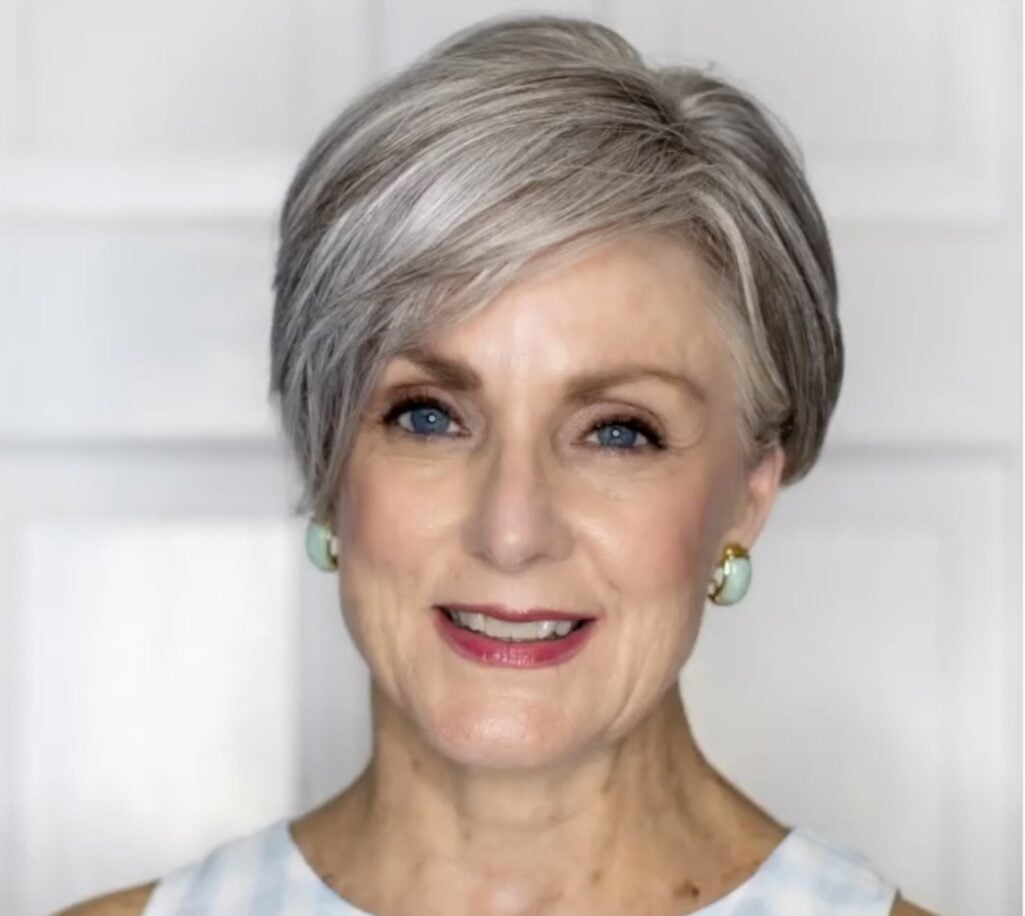
Tools and Luxuries That Make a Difference
The right tools protect your hair and help it look its best. That’s what healthy hair after 50 is all about!
- Detangling Brush: Gentle on fragile strands.
- Olivia Garden Round Brush: My go-to for blowouts.
- Dyson Supersonic Dryer: Fast, safe drying.
- Dyson Airwrap: Jess, my photographer, swears by hers. Shop Dyson Airwrap.
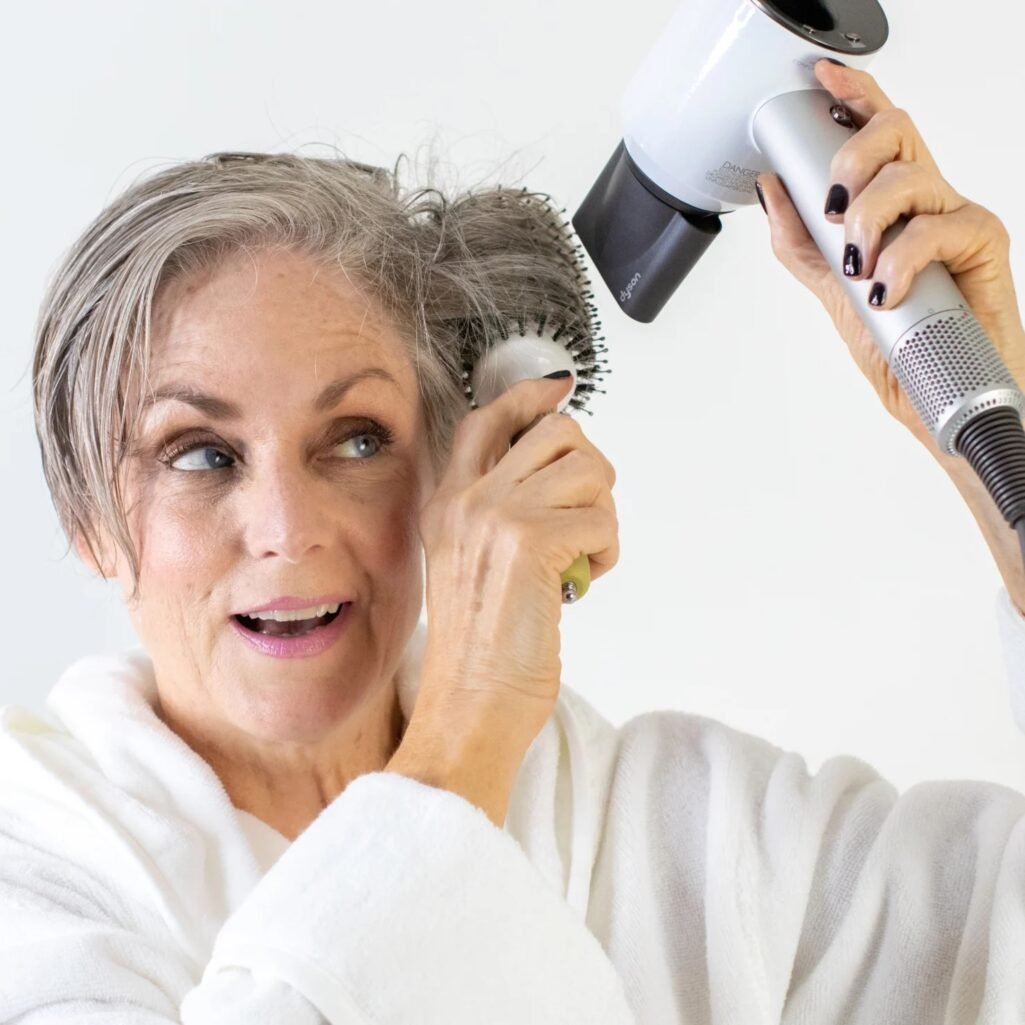
The right tools make a BIG difference for healthy hair after 50. Here’s a post on How to Style a Pixie Cut
Everyday Luxuries That Protect Hair
- Slip Silk Pillowcase: Worth every penny.
- Scalp Massager: Boosts circulation.
- Microfiber Hair Towels: Both a luxury wrap and budget option.
- Wide-Tooth Comb: Shower essential.
Beth’s Life Beyond Style Tip
Hair is part of our identity, but it is not the measure of our worth. At 50, 60, and 70, we get to decide how we show up. For some, that means silver strands with bold lipstick. For others, it means supplements, serums, and high-tech dryers. There is no wrong answer. The point is not to follow the rules, but to rewrite them.
FAQs
What happens to your hair after 50?
Hormonal changes, slower growth cycles, and reduced oil production all contribute.
What is the best shampoo for gray hair?
A purple shampoo like Hair Biology keeps silver bright.
What is the best weekly hair care routine for women over 50?
Use purple shampoo once or twice a week, sulfate-free shampoo on other days, a weekly mask, serum before blow drying, hairspray for shine, and dry shampoo for volume.
What are the best supplements for thinning hair in women over 50?
Nutrafol and blends with biotin, keratin, and collagen can help support stronger hair growth.
Does Nutrafol really work for thinning hair?
Yes. Clinical studies show improvements in thickness and reduced shedding with consistent use.
How do I care for postpartum hair loss?
It is common and usually temporary. Supplements like Nutrafol Postpartum can help support recovery.
Do women have to cut their hair short after 50?
No. That is an outdated rule. Long, bob, pixie—choose what makes you feel confident.
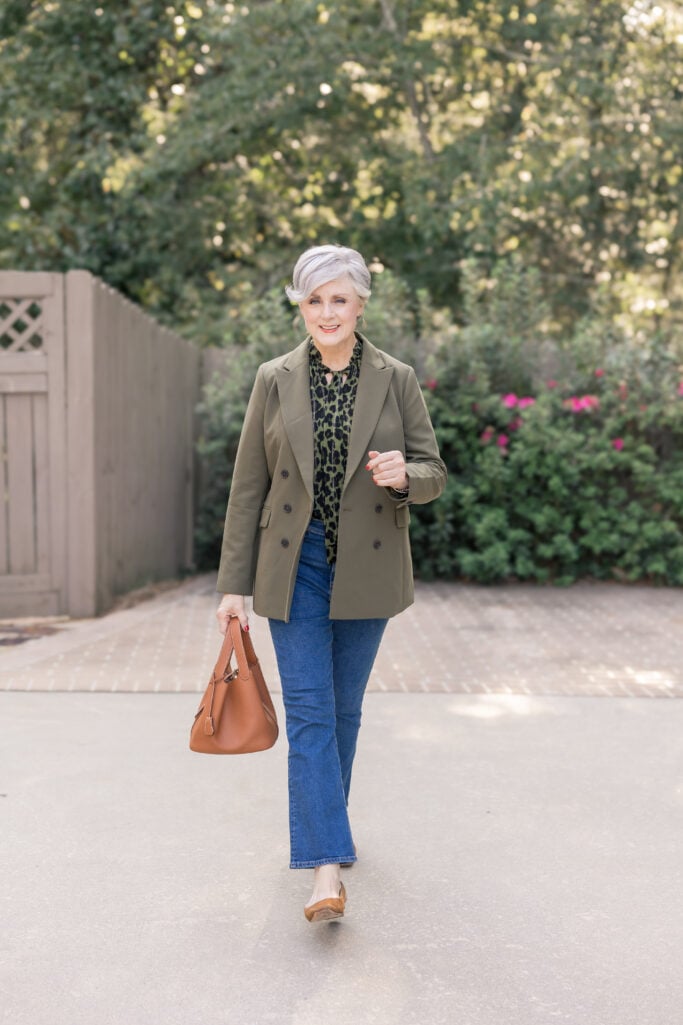
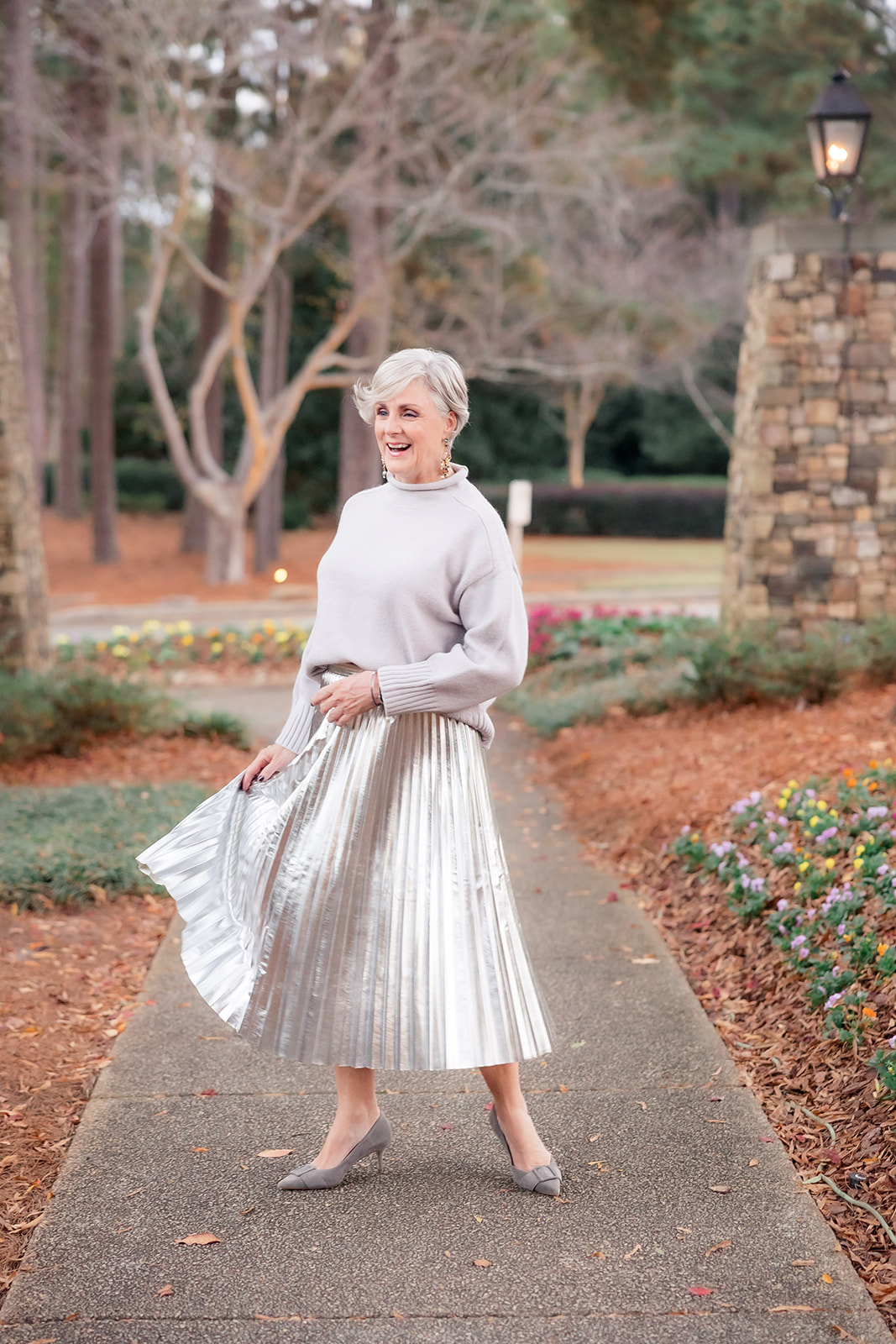
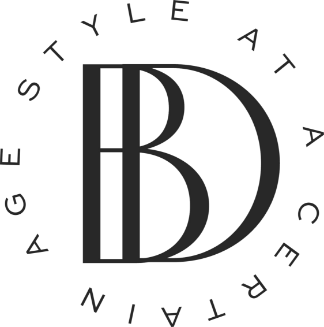
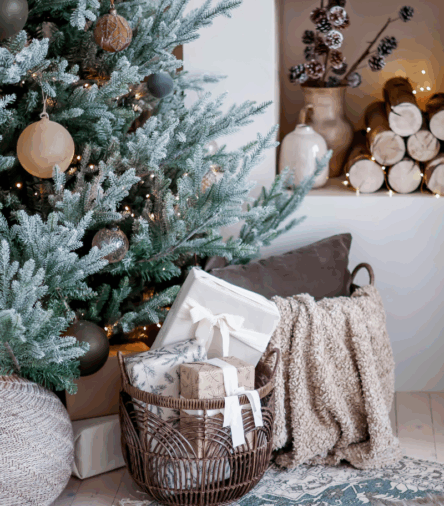

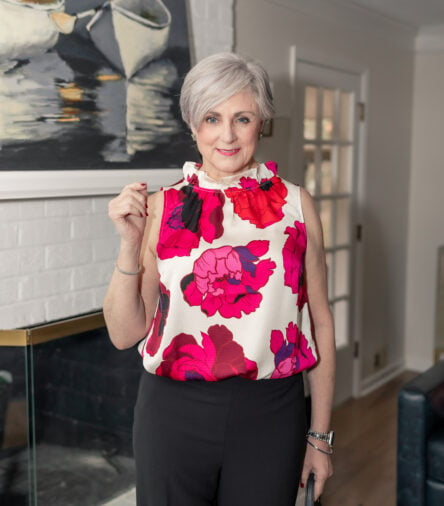
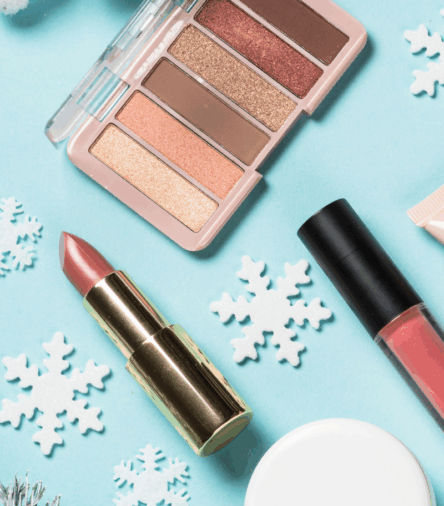
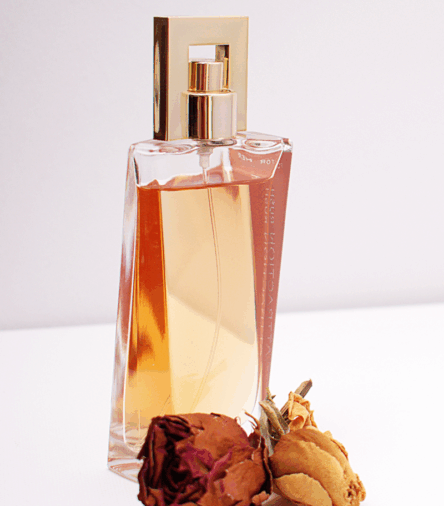

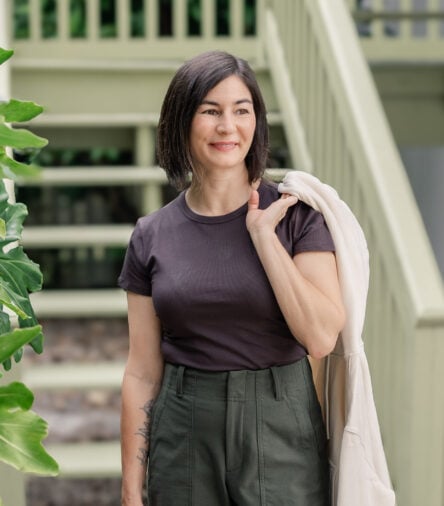

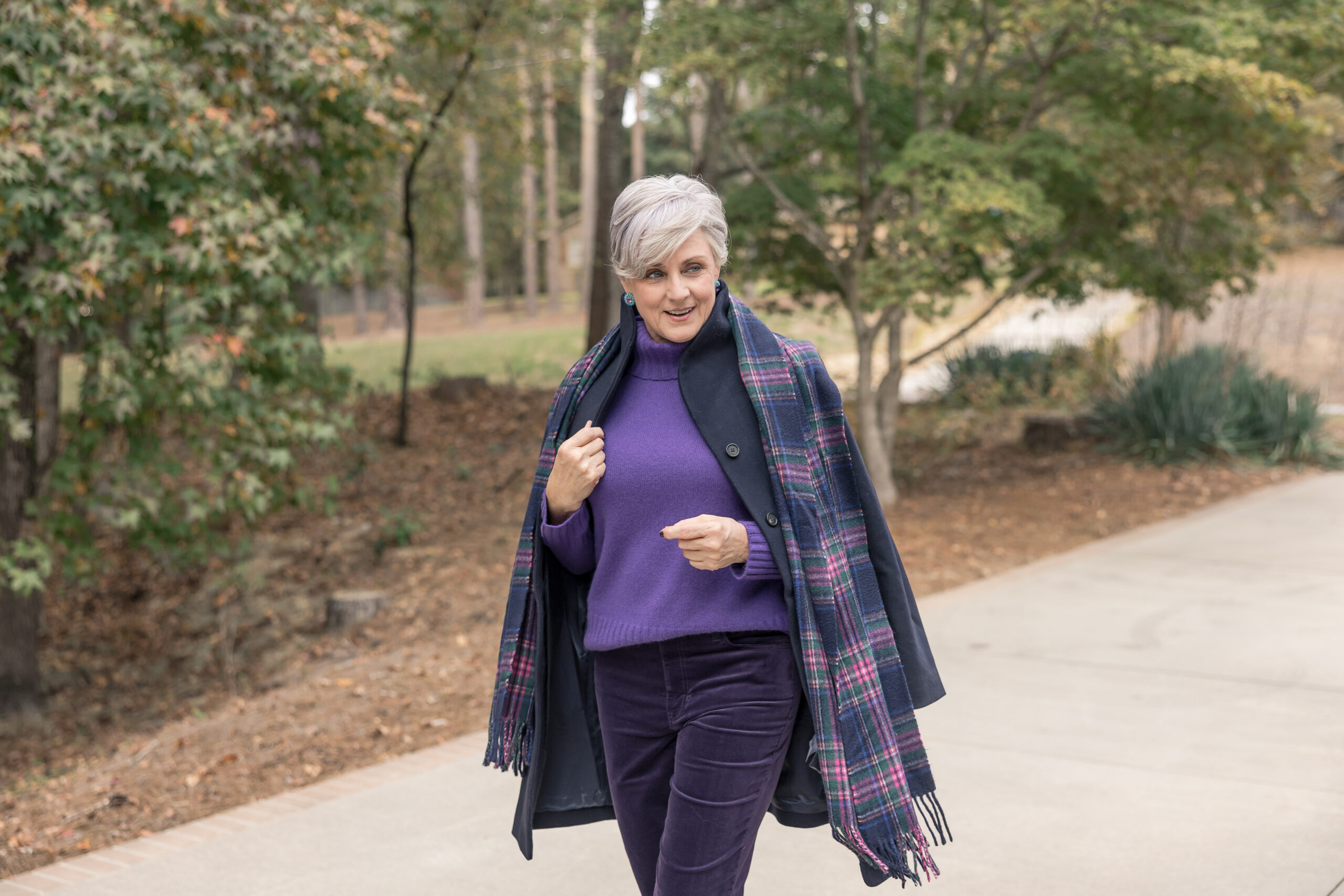
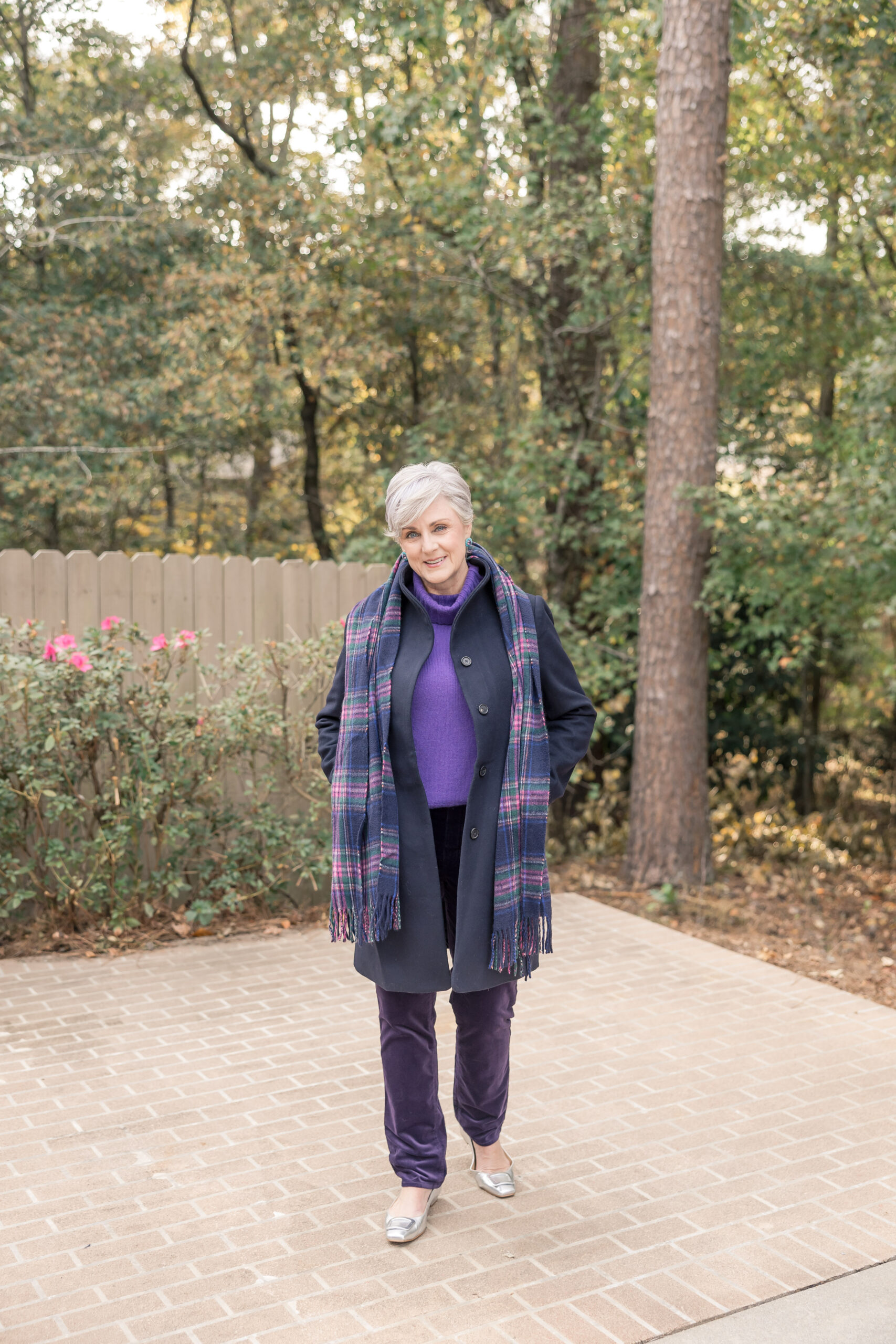
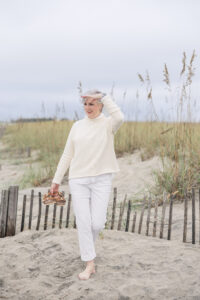
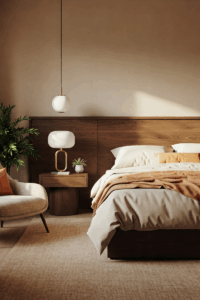
Sweet picture of you and your Dad
Thank you! Just love family memories.
My stylist helped to me to gradually get to gray. Plus hair dye has harsh, unhealthy chemicals. By embracing gray I was able to redirect monthly coloring cost to focus on cut and gray hair care products instead. Cut, color and confidence – Grayte!
I love that you had a stylist guide you through the transition — that makes all the difference. You’re so right, embracing gray isn’t just about the look, it’s also about confidence (and saving on those monthly dye appointments!). Redirecting that budget to a great cut and gray-friendly products is such a smart move.
Wonderful photo of you and your dad. You really resemble him, Beth!
Hi Beth. Thank you so much for showing the photo of you and your dad. My dad did not live long enough for such a photo with me, so your pic really made me smile. There is a great family resemblance, and your family dynamic is visible for all to see.